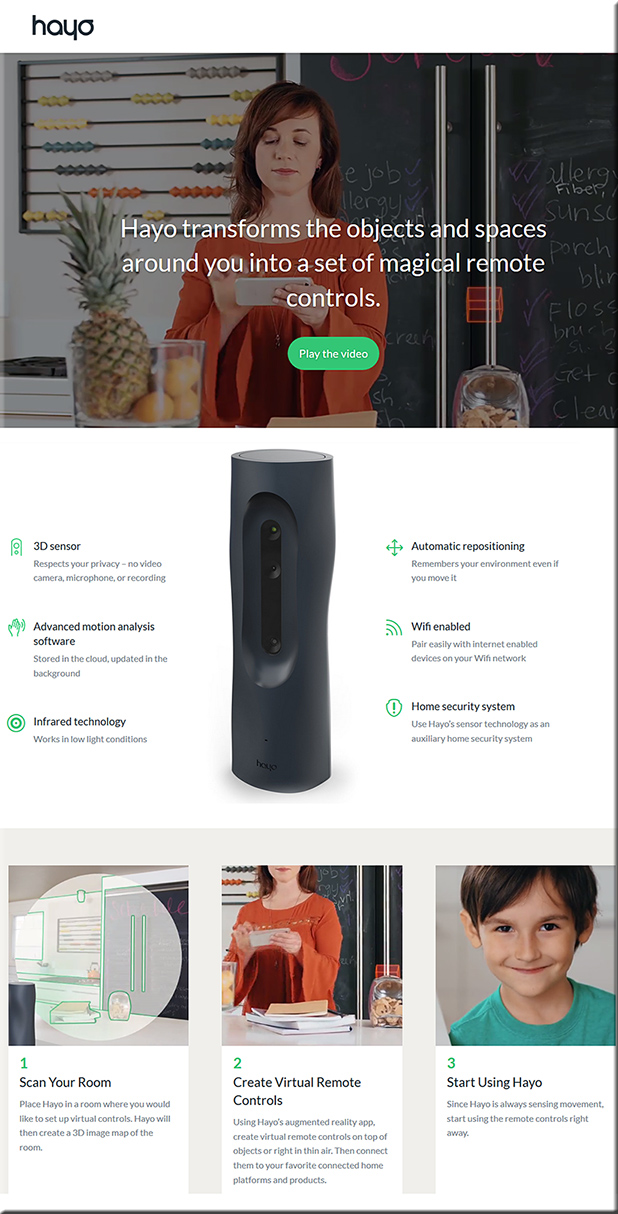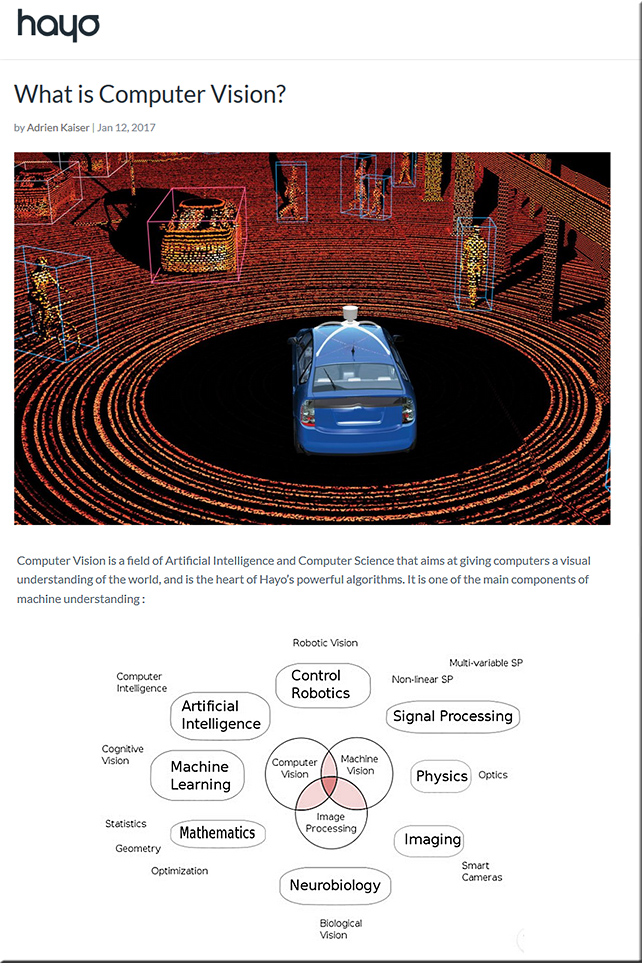Teaching math using a school door ?? #edchat pic.twitter.com/7biGT2ntg9
— ?Dan McCabe? (@danieldmccabe) April 28, 2017




Teaching math using a school door ?? #edchat pic.twitter.com/7biGT2ntg9
— ?Dan McCabe? (@danieldmccabe) April 28, 2017
The 82 Hottest EdTech Tools of 2017 According to Education Experts — from tutora.co.uk by Giorgio Cassella
Excerpt:
If you work in education, you’ll know there’s a HUGE array of applications, services, products and tools created to serve a multitude of functions in education.
Tools for teaching and learning, parent-teacher communication apps, lesson planning software, home-tutoring websites, revision blogs, SEN education information, professional development qualifications and more.
There are so many companies creating new products for education, though, that it can be difficult to keep up – especially with the massive volumes of planning and marking teachers have to do, never mind finding the time to actually teach!
So how do you know which ones are the best?
Well, as a team of people passionate about education and learning, we decided to do a bit of research to help you out.
We’ve asked some of the best and brightest in education for their opinions on the hottest EdTech of 2017. These guys are the real deal – experts in education, teaching and new tech from all over the world from England to India, to New York and San Francisco.
They’ve given us a list of 82 amazing, tried and tested tools…
From DSC:
The ones that I mentioned that Giorgio included in his excellent article were:
The woman who thinks time has rendered Western education obsolete — from unlimited.world with thanks to Maree Conway for her tweet on this
Excerpt (emphasis DSC):
For years, Finland has loitered in the upper echelons of global literacy and numeracy tables, leading politicians from other Western nations to see its education system as a model of inspiration. Why, then, is the Finnish government submitting it to a radical overhaul?
Dr. Marjo Kyllonen is the Education Manager for Helsinki. Having devised the blueprint for the future of Finland’s school system, she is playing a pivotal role in driving these changes through. She is doing so because she sees the structure and aims of current education systems in the West as increasingly irrelevant and obsolete, relics of an Industrial Age that we started to leave behind a long time ago. She argues that we need to rethink our entire relationship to education to equip future generations with the tools they need to face the challenges to come –challenges such as climate collapse, automated workforces, urbanisation and social division. The key to her blueprint is an emphasis on collaborative, holistic, “phenomenon” teaching – a routine that is less beholden to traditional subject-based learning and instead teaches pupils to work together to deal with problems they will face in their everyday lives, including those they encounter online and in the digital world.
Other:
From DSC:
Whether one agrees with Marjo or not, her assertions are very thought provoking. I really enjoyed reading this piece.
“The world’s first smart #AugmentedReality for the Connected Home has arrived. — from thunderclap.it
From DSC:
Note this new type of Human Computer Interaction (HCI). I think that we’ll likely be seeing much more of this sort of thing.
Excerpt (emphasis DSC):
How is Hayo different?
AR that connects the magical and the functional:
Unlike most AR integrations, Hayo removes the screens from smarthome use and transforms the objects and spaces around you into a set of virtual remote controls. Hayo empowers you to create experiences that have previously been limited by the technology, but now are only limited by your imagination.
Screenless IoT:
The best interface is no interface at all. Aside from the one-time setup Hayo does not use any screens. Your real-life surfaces become the interface and you, the user, become the controls. Virtual remote controls can be placed wherever you want for whatever you need by simply using your Hayo device to take a 3D scan of your space.
Smarter AR experience:
Hayo anticipates your unique context, passive motion and gestures to create useful and more unique controls for the connected home. The Hayo system learns your behaviors and uses its AI to help meet your needs.
Also see:
NYU Steinhardt Edtech Accelerator’s 2016 Cohort Starting Up Chatbots, Augmented Reality Tools and More — from campustechnology.com by Sri Ravipati
Excerpt:
The cohort includes:
Google Earth lets you explore the planet in virtual reality — from vrscout.com by Eric Chevalier

How virtual reality could change the way students experience education — from edtechmagazine.com by by Andrew Koke and Anthony Guest-Scott
High-impact learning experiences may become the norm, expanding access for all students.
Excerpt:
The headlines for Pokémon GO were initially shocking, but by now they’re familiar: as many as 21 million active daily users, 700,000 downloads per day, $5.7 million in-app purchases per day, $200 million earned as of August. Analysts anticipate the game will garner several billion dollars in ad revenue over the next year. By almost any measure, Pokémon GO is huge.
The technologies behind the game, augmented and virtual reality (AVR), are huge too. Many financial analysts expect the technology to generate $150 billion over the next three years, outpacing even smartphones with unprecedented growth, much of it in entertainment. But AVR is not only about entertainment. In August 2015, Teegan Lexcen was born in Florida with only half a heart and needed surgery. With current cardiac imaging software insufficient to assist with such a delicate operation on an infant, surgeons at Nicklaus Children’s Hospital in Miami turned to 3D imaging software and a $20 Google Cardboard VR set. They used a cellphone to peer into the baby’s heart, saw exactly how to improve her situation and performed the successful surgery in December 2015.
“I could see the whole heart. I could see the chest wall,” Dr. Redmond Burke told Today. “I could see all the things I was worried about in creating an operation.”
Visionary: How 4 institutions are venturing into a new mixed reality — from ecampusnews.com by Laura Devaney
Mixed reality combines virtual and augmented realities for enhanced learning experiences–and institutions are already implementing it.
Excerpt:
Texas Tech University Health Sciences Center in Lubbock and San Diego State University are both part of a Pearson mixed reality pilot aimed at leveraging mixed reality to solve challenges in nursing education.
…
At Bryn Mawr College, a women’s liberal arts college in Pennsylvania, faculty, students, and staff are exploring various educational applications for the HoloLens mixed reality devices. They are testing Skype for HoloLens to connect students with tutors in Pearson’s 24/7 online tutoring service, Smarthinking.
…
At Canberra Grammar School in Australia, Pearson is working with teachers in a variety of disciplines to develop holograms for use in their classrooms. The University of Canberra is partnering with Pearson to provide support for the project and evaluate the impact these holograms have on teaching and learning.
ZapBox brings room-scale mixed reality to the masses — from slashgear.com by JC Torres
Excerpt:
As fantastic as technologies like augmented and mixed reality may be, experiencing them, much less creating them, requires a sizable investment, financially speaking. It is just beyond the reach of consumers as well as your garage-type indie developer. AR and VR startup Zappar, however, wants to smash that perception. With ZapBox, you can grab a kit for less than a triple-A video game to start your journey towards mixed reality fun and fame. It’s Magic Leap meets Google Cardboard. Or as Zappar itself says, making Magic Leap, magic cheap!

Shakespeare’s Tempest gets mixed reality makeover — from bbc.com by Jane Wakefield
 Intel’s flying whale was the inspiration for the technology in The Tempest
Intel’s flying whale was the inspiration for the technology in The Tempest
Excerpts from the 9/23/16 School Library Journal Webcast:

From DSC:
I think Technical Communicators have a new pathway to pursue…check out this piece from Scope AR and Caterpillar.
Check out:
computerhistory.org/timeline/
For the history of AI and robotics, see:
computerhistory.org/timeline/ai-robotics/

IBM Foundation collaborates with AFT and education leaders to use Watson to help teachers — from finance.yahoo.com
Excerpt:
ARMONK, N.Y., Sept. 28, 2016 /PRNewswire/ — Teachers will have access to a new, first-of-its-kind, free tool using IBM’s innovative Watson cognitive technology that has been trained by teachers and designed to strengthen teachers’ instruction and improve student achievement, the IBM Foundation and the American Federation of Teachers announced today.
Hundreds of elementary school teachers across the United States are piloting Teacher Advisor with Watson – an innovative tool by the IBM Foundation that provides teachers with a complete, personalized online resource. Teacher Advisor enables teachers to deepen their knowledge of key math concepts, access high-quality vetted math lessons and acclaimed teaching strategies and gives teachers the unique ability to tailor those lessons to meet their individual classroom needs.
…
Litow said there are plans to make Teacher Advisor available to all elementary school teachers across the U.S. before the end of the year.
In this first phase, Teacher Advisor offers hundreds of high-quality vetted lesson plans, instructional resources, and teaching techniques, which are customized to meet the needs of individual teachers and the particular needs of their students.
Also see:
Educators can also access high-quality videos on teaching techniques to master key skills and bring a lesson or teaching strategy to life into their classroom.
From DSC:
Today’s announcement involved personalization and giving customized directions, and it caused my mind to go in a slightly different direction. (IBM, Google, Microsoft, Apple, Amazon, and others like Smart Sparrow are likely also thinking about this type of direction as well. Perhaps they’re already there…I’m not sure.)
But given the advancements in machine learning/cognitive computing (where example applications include optical character recognition (OCR) and computer vision), how much longer will it be before software is able to remotely or locally “see” what a third grader wrote down for a given math problem (via character and symbol recognition) and “see” what the student’s answer was while checking over the student’s work…if the answer was incorrect, the algorithms will likely know where the student went wrong. The software will be able to ascertain what the student did wrong and then show them how the problem should be solved (either via hints or by showing the entire problem to the student — per the teacher’s instructions/admin settings). Perhaps, via natural language processing, this process could be verbalized as well.
Further questions/thoughts/reflections then came to my mind:
![The Living [Class] Room -- by Daniel Christian -- July 2012 -- a second device used in conjunction with a Smart/Connected TV](http://danielschristian.com/learning-ecosystems/wp-content/uploads/2012/07/The-Living-Class-Room-Daniel-S-Christian-July-2012.jpg)
Also see:
The SIIA CODiE Awards for 2016 — with thanks to Neha Jaiswal from uCertify for this resource; uCertify, as you will see, did quite well
Since 1986, the SIIA CODiE Awards have recognized more than 1,000 software and information companies for achieving excellence. The CODiE Awards remain the only peer-recognized program in the content, education, and software industries so each CODiE Award win serves as incredible market validation for a product’s innovation, vision, and overall industry impact.
Connecting the education community with research on learning — from digitalpromise.org
Excerpt:
When designing a program or product, many education leaders and ed-tech developers want to start with the best knowledge available on how students learn. Unfortunately, this is easier said than done.
Although thousands of academic articles are published every year, busy education leaders and product developers often don’t know where to start, or don’t have time to sift through and find studies that are relevant to their work. As pressure mounts for “evidence-based” practices and “research-based” products, many in the education community are frustrated, and want an easier way to find information that will help them deliver stronger programs and products — and results. We need better tools to help make research more accessible for everyday work in education.
The Digital Promise Research Map meets this need by connecting education leaders and product developers with research from thousands of articles in education and the learning sciences, along with easy-to-understand summaries on some of the most relevant findings in key research topics.
Also see:
This is why I’m so excited about the “The Living [Class] Room” vision. Because it is through that vision that people of all ages — and from all over the world — will be able to constantly learn, grow, and reinvent themselves (if need be) throughout their lifetimes. They’ll be able to access and share content, communicate and discuss/debate with one another, form communities of practice, go through digital learning playlists (like Lynda.com’s Learning Paths) and more. All from devices that represent the convergence of the television, the telephone, and the computer (and likely converging with the types of devices that are only now coming into view, such as Microsoft’s Hololens).
You won’t just be limited to going back to college for a day — you’ll be able to do that 24×7 for as many days of the year as you want to.
Then when some sophisticated technologies are integrated into this type of platform — such as artificial intelligence, cloud-based learner profiles, algorithms, and the ability to setup exchanges for learning materials — we’ll get some things that will blow our minds in the not too distant future! Heutagogy on steroids!
Want to go back to college? You can, for a day. — from washingtonpost.com by Valerie Strauss
Excerpt:
Have you ever thought about how nice it would be if you could go back to college, just for the sake of learning something new, in a field you don’t know much about, with no tests, homework or studying to worry about? And you won’t need to take the SAT or the ACT to be accepted? You can, at least for a day, with something called One Day University, the brainchild of a man named Steve Schragis, who about a decade ago brought his daughter to Bard College as a freshman and thought that he wanted to stay.
One Day University now financially partners with dozens of newspapers — including The Washington Post — and a few other organizations to bring lectures to people around the country. The vast majority of the attendees are over the age 50 and interested in continuing education, and One Day University offers them only those professors identified by college students as fascinating. As Schragis says, it doesn’t matter if you are famous; you have to be a great teacher. For example, Schragis says that since Bill Gates has never shown to be one, he can’t teach at One Day University.
…
We bring together these professors, usually four at at a time, to cities across the country to create “The Perfect Day of College.” Of course we leave out the homework, exams, and studying! Best if there’s real variety, both male and female profs, four different schools, four different subjects, four different styles, etc. There’s no one single way to be a great professor. We like to show multiple ways to our students.
Most popular classes are history, psychology, music, politics, and film. Least favorite are math and science.
See also:
Addendum:
We know the shelf-life of skills are getting shorter and shorter. So whether it’s to brush up on new skills or it’s to stay on top of evolving ones, Lynda.com can help you stay ahead of the latest technologies.
20 awesome BYOD and mobile learning apps — from edutopia.org by Vicki Davis; updated 2/4/16
Excerpt:
We have now been Bring Your Own Device (BYOD) for three years, and boy, do the students bring it. They bring it all! We have iPads, Surface, iPhones, Droids, Chromebooks, Macs, and PC laptops. Here’s my current thinking.
7 best Google apps and tools — from interestingengineering.com
Excerpt:
Music is for everyone. So this year for Music In Our Schools month, we wanted to make learning music a bit more accessible to everyone by using technology that’s open to everyone: the web. Chrome Music Lab is a collection of experiments that let anyone, at any age, explore how music works. They’re collaborations between musicians and coders, all built with the freely available Web Audio API. These experiments are just a start. Check out each experiment to find open-source code you can use to build your own.
My challenge to you – 8 things all teachers should learn about #edtech — from ictevangelist.com by Mark Anderson
Excerpt:
I love the School Report scheme that the BBC run via Newsround. We all remember the Newsrounds of our youth. For me it was John Craven who made me watch it whenever it was on. It was this report I saw recently on eight things teachers should learn, which got me thinking about eight things I thought teachers should learn about edtech.
My work sees me regularly helping teachers learn different things related to the use of technology and so in this post, I’m going to talk about the eight things I think teachers should learn with #edtech to help support their use of technology to enhance learning in the classroom.
Mark mentions: Google, Padlet, Kahoot, Socrative, Camera, Microphone, Twitter, Videoconferencing software
Quiz accommodations for students in Canvas and Moodle — from thejournal.com by Emmett Dulaney03/16/16
Excerpt:
As we move toward interacting more with students who have an individualized education program (IEP) indicating that they need additional time on tests and quizzes or just need to deal with life issues, it is imperative that the learning management system (LMS) depended upon by an instructor and student alike be properly configured for such accommodations. Canvas and Moodle are currently two of the most popular learning management systems, and both offer the ability to make adjustments to quiz functions within the course without compromising the overall structure of the course. In this article, we will examine how to do so and offer some tips on situations where they are relevant.
Use these Chrome apps to unleash students’ creativity — from educatorstechnology.com
Excerpt:
[The] Chrome web store is packed full of all kinds of educational apps and extensions some of which are also integrated with Google Drive. For those of you looking for a handy resource of Chrome apps to use with students in class, check out this comprehensive chart. In today’s post we are sharing with you a collection of some practical Chrome extensions to unleash learners creativity. Using these resources, students will be able to engage in a number of creative literacy activities that will allow them to multimodally communicate their thoughts, share their ideas and develop new learning skills.
Integrating technology and literacy — from edutopia.org by Frank Ward
Excerpt:
How do you work technology into the pedagogy, instead of just using something cool? That task can be especially daunting in language arts literacy classrooms where reading and writing skill development is the crux of daily lessons. However, as 1:1 technology initiatives roll out, integrating technology into the classroom is our reality.
With hundreds of sites, apps, Chrome extensions, and platforms available, choosing the right ones can seem overwhelming. As an eighth-grade language arts teacher, I’ve experienced this myself. Following are four tools that can help provide immediate formative assessment data as well as top-of-the-rotation feedback to help students develop personal learning goals.
If, like my school, you’re in a “Chromebook District,” these suggested tools will work well because all integrate perfectly when you sign in with your Google ID, limiting the need for multiple passwords. This saves a lot of student confusion, too.
Teachers are using theater and dance to teach math — and it’s working — from washingtonpost.com by Moriah Balingit
Excerpt:
This giggly play session actually was a serious math lesson about big and small and non-standard measurements. Dreamed up by Richardson and kindergarten teacher Carol Hunt, it aims to get the children to think of animal steps as units of measurement, using them to mark how many it takes each animal to get from a starting line to the target.
Teachers call such melding of art and traditional subjects “art integration,” and it’s a new and increasingly popular way of bringing the arts into the classroom. Instead of art as a stand-alone subject, teachers are using dance, drama and the visual arts to teach a variety of academic subjects in a more engaging way.
Some older items include:
Tech Tip: Using Nearpod for math instruction — from smartblogs.com
Storytelling app a hit; launches a new chapter in transmedia — from blogs.vancouversun.com
Excerpt:
Paul Pattison and Luke Minaker knew they were onto something when they got an email from the mother of a nine-year-old who read the first instalment of their interactive story, Weirdwood Manor.
“She wrote that she couldn’t get her son to pick up a book,” said Pattison, technical director of All Play No Work, producer of the iPad app. “She got the app for her son and he went through it in two nights. He finished both books.
“And then because we don’t have book 3 out yet, unprompted by her he went over to the bookshelf and pulled off a paperback and started reading chapter books again.”
.

From DSC:
I’d like to thank Jenny Zeeff for the reminder on this resource. Though I’ve posted this item before, Jenny reminded me of this set of resources that might be very useful to someone else out there as well.
Collaborative classrooms mark wave of the future in higher ed — from educationdive.com by Tara García Mathewson
Student-centered models turn instructors into guides as students investigate for themselves
Excerpts:
The designs put students at the center of instruction, shifting the faculty role to one of tutor or guide.
“This changes the whole way we teach,” Benavides said.
…
Some colleges and universities are designing these spaces in new, modern buildings, while others are remodeling existing classrooms and making them work for this next generation of teaching and learning.
From DSC:
This sort of change may be uncomfortable to students and to faculty members alike. However, to shift the ownership of the learning to the student is a positive move. Why? Because we all need to be lifelong learners now. The learning rests with each one of us now, or we could be broadsided and have a very difficult time getting back up. So to come out of college knowing how to learn…that’s a huge plus in my mind.

Also see:
From DSC:
Could 3D printers help students trying to learn about geometry, calculus, data visualizations, and the like? These articles seem to think so, and so do I:
Also see:
Schools, Universities Largest Market for 3D Printers — from educationnews.org
Excerpt:
Schools and universities are beginning to incorporate 3D printers into their curricula more often, and now make up the largest market for 3D printers under $2,500.
Contrary to expectations, educational institutions buy more 3D printers than individuals. The number of US schools that have 3D printers hasn’t been quantified, but 5,000 schools have MakerBot’s 3D printers, and they are only one of the major sellers. Others include Stratasys, 3D Systems, and Variquest.
3D printer purchases are expected to double in 2016 to 496,500 shipments. By 2019, numbers could reach 5.6 million. These statistics come from a report by Gartner Inc., an independent technology research company.

